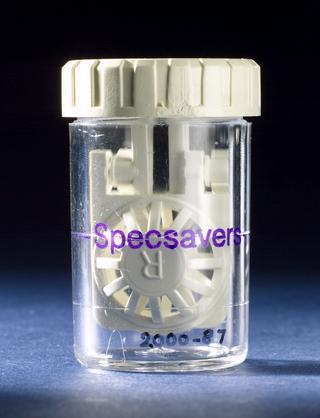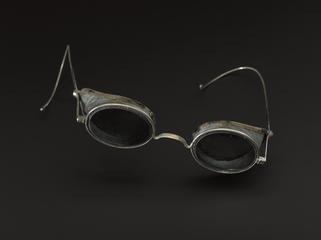




Bow, open end, spectacle case, ivory (?), with judgement of Solomon and Death of the Doctor depicted, repaired, English or Dutch, 1490-1550
The Biblical story of the Judgement of Solomon is depicted on one side of this unusual ivory spectacle case. King Solomon was asked to judge which woman was the mother of the baby he was presented with. Solomon declared he would cut the child in two and give a half to each of the women. One woman declared she would rather give up her child than see her child hurt. Solomon decided this woman was the child’s mother due to her show of maternal love.
The other side depicts the ‘Death of the Doctor.’ A doctor is confronted by Death in the form of a skeleton. Images of Death with different people including the clergy, beautiful women, pedlars and beggars were often part of paintings and poems. These were known as the ‘Dance of Death.’ They reminded people death comes to all regardless of wealth, looks or position in society. The case may also be a memento mori. This literally means a reminder of death.
Details
- Category:
- Ophthalmology
- Collection:
- Sir Henry Wellcome's Museum Collection
- Object Number:
- A681553
- Materials:
- ivory, ? and whalebone, ?
- Measurements:
-
overall: 69 mm x 92 mm x 15 mm, .085 kg




